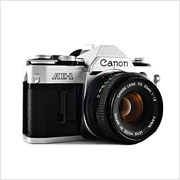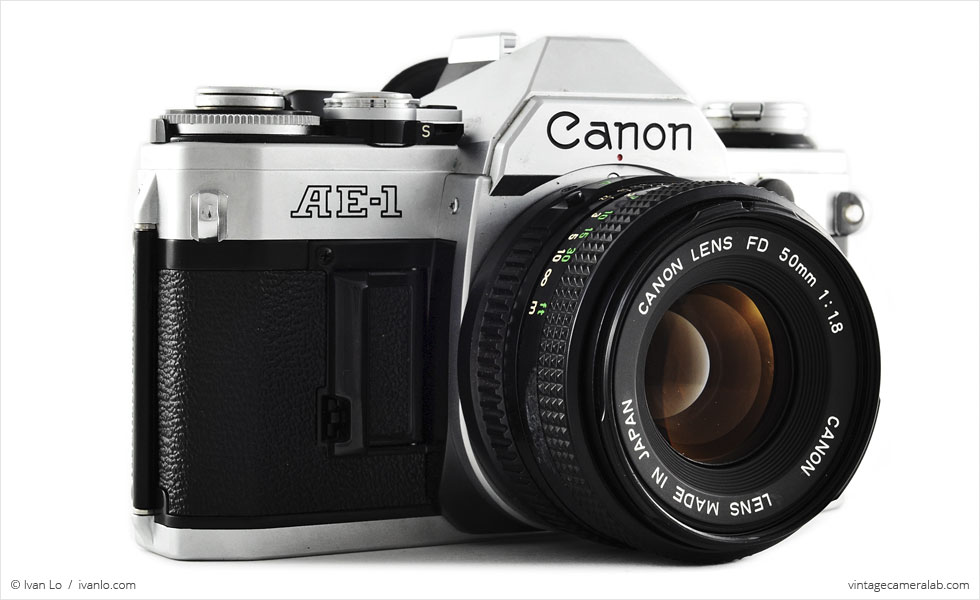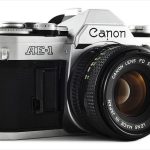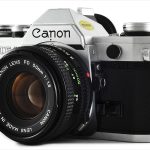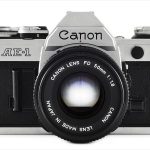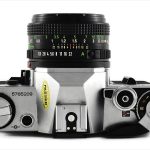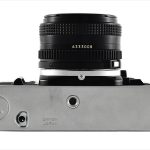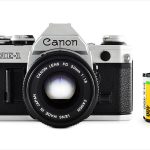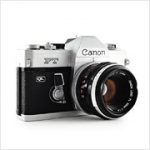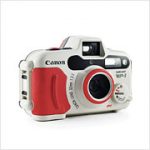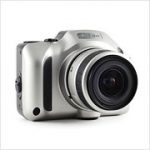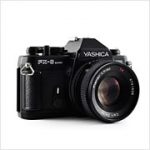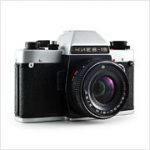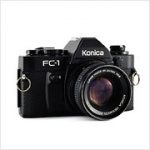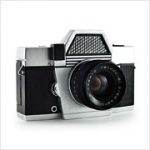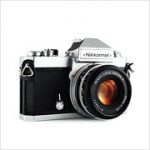Canon AE-1 Specifications
| Manufacturer: | Canon Inc. |
| Origin: | Japan |
| Made in: | Japan |
| Introduced: | 1976 |
| Type: | Single Lens Reflex |
| Lens Mount: | Canon FD-Mount |
| Format: | 135 Film |
| Dimensions: | 14.8 x 9 x 4.9 cm (body only) |
| 14.8 x 9 x 8.5 cm (with lens) |
Canon AE-1 Overview
The Canon AE-1 was one of the very first affordable SLRs with automatic exposure available to the public. During the ’70s and ’80s, competition in the SLR market among Japanese manufacturers was intense and, having lost considerable market share to its biggest rival Nikon, Canon decided to overhaul their entire line of single lens reflex cameras. Nikon more or less had complete control over the professional SLR market at the time so Canon decided to launch its A-series of consumer cameras, the most popular of which was the AE-1. By cleverly simplifying the design and using cheaper materials, Canon were able to keep their costs low and ship out over one million units during its eight year production run to amateur photographers across the globe. Due to its ubiquity, simple construction, and reliability, the AE-1 remains one of the most common manual focus SLRs still in use today.
Underneath its classical metal exterior, the AE-1 houses a microprocessor-driven cloth shutter assembly capable of speeds ranging from two to 1/1000 seconds and bulb. Working in conjunction with the electronically controlled shutter is a breech-lock mount which accepts any Canon FD or FDn mount lenses; in this case, a 50mm f/1.8. On the user’s left-hand side of the lens mount you will find a depth of field preview slider on the bottom, exposure preview button on top of that, and a silver backlight exposure compensation button on top of that. Above those switches is the flash sync socket and on the other side of the lens mount is the battery compartment.
On the left side of the top plate’s hot shoe is the film rewind knob and battery check button. On the right side is the shutter button with threaded release socket surrounded by a switch with three settings: S for self-timer, A for shooting, and L to lock the camera and prevent the battery from draining when not in use. Next to the frame counter is the shutter speed and film speed selector surrounding the frame advance lever.
This particular Canon is the very first SLR I’ve ever found at a thrift store and, if I remember correctly, I got the camera with 50mm f/1.8 and a leather half case for only a few dollars. While I have yet to put a roll of film through my AE-1, my wife still shoots regularly with her trusty AE-1 Program, a later variant that featured program automatic exposure.
Find your very own Canon AE-1 on eBay.
McKeown, James M. and Joan C. McKeown’s Price Guide to Antique and Classic Cameras, 2001-2002. (Grantsburg, WI, USA: Centennial Photo Service, 2001), p 130.
